
IT IS probably no coincidence that Britain’s most influential all-wheel drive shares its initials with the brand once regarded as the ‘Best Car in the World’.
From inception, the Range Rover was intended to be an executive off-roader that could haul polo ponies on Sunday, drive to the office on Monday and unashamedly share garage space with its owner’s Rolls-Royce.
Conceived by engineering director Spen King, the Range Rover could trace its lineage to a ‘Road Rover’ prototype from the 1950s that combined a Land Rover driveline and chassis with more car-like styling.
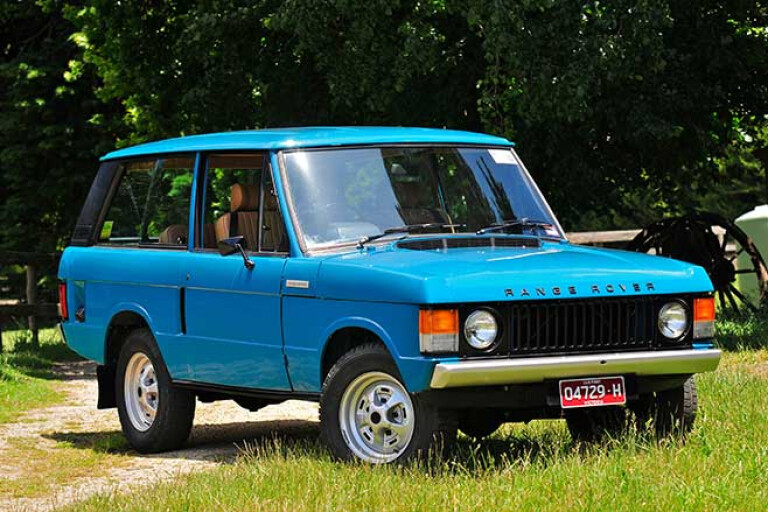
King’s prototype began testing in 1967 and was introduced to a gobsmacked 4WD world three years later. Under the bonnet was Rover’s familiar all-alloy V8, the same one used in the company’s sedans, but de-tuned to deliver 97kW and maximum torque at 2500rpm.
Constant four-wheel drive eliminated the need for lockable front hubs. Instead, a centre differential fed power to all four wheels and could be locked via vacuum control. A floor-mounted lever engaged the very serious low-range gear set which cut speed in first to less than walking pace.
The original Range Rover came with two doors, vinyl seat trim and a four-speed manual transmission with no automatic alternative. Australian deliveries began in 1972 and were priced at around $7500. That money would have bought one and a half FJ55 Toyota LandCruisers with four doors and more power, but the ‘Toorak Tractor’ offered greater prestige.
In 1980, a three-speed Chrysler automatic transmission became available, and the four-speed manual was replaced in 1984 by a five-speed.
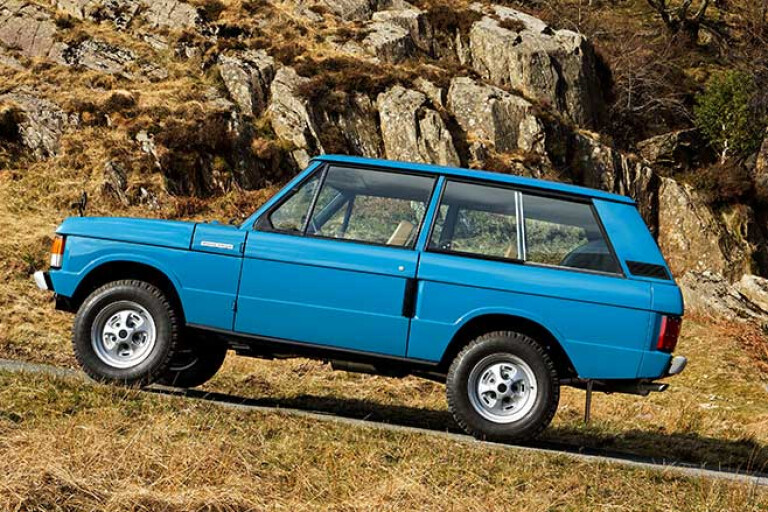
In 1982 the body was altered to accommodate a pair of additional doors and interior improvements. Power steering, which was optional on early models, had been standard since 1978 on Australian-delivered Range Rovers.
The Highline variation released in 1984 was distinguished externally by alloy wheels and inside by the standard automatic transmission (manual optional), upgraded trim, air-conditioning, electric windows and mirrors. By this time the price had surged past $40,000 yet sales remained strong. In 1985, Range Rover had its best year internationally since the model’s inception with more than 13,000 vehicles sold.
To help counter the power-sapping potential of unleaded fuel, an EFI engine with 110kW was announced in 1986, accompanied by a ZF four-speed automatic transmission.
Big news for Range Rover buyers in 1989 was the introduction of a 134kW 3.9-litre fuel-injected V8, powering a revamped version of the well-appointed Vogue. Introduced a few months earlier with a 110kW engine, the Vogue was packed with features including ABS, leather upholstery, power front seats and sunroof, and cruise control.
In 1993, the LSE Vogue’s wheelbase was extended from the standard 2540mm to 2743 and came with mandatory auto transmission, climate-control air-conditioning, a CD player and remote central locking. The LSE’s air-assisted suspension was destined to cause problems in later life. It was also the first Range Rover to breach the $100,000 mark.
ON THE ROAD
IN AN era when semi-elliptic springs were standard fare in the 4WD world, the all-coil Range Rover was a revelation when it debuted.
Huge amounts of spring travel and a rear-axle stabilising strut allowed the Range Rover to adopt seemingly impossible wheel and body angles while picking its way through ruts and over boulders that would stop virtually any non-military all-wheel drives.
Later versions with stiffer springs and air-assistance kept body roll under greater control but at the cost of increased mechanical complexity and diminished off-road versatility.
Arguments rage among enthusiasts over the benefits of the Boge load-levelling strut. Some say the device should be retained to maintain traction and maximum wheel deflection in rough conditions. Others recommend ditching a worn-out Boge in favour of stiffer springs and uprated shock absorbers.
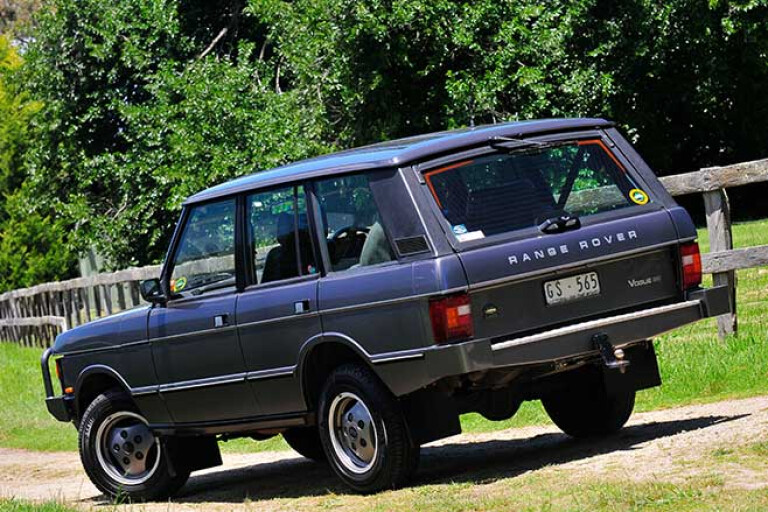
Range Rovers fall typically into two categories. There are the super-serious off-road versions with jacked-up suspensions and massive tyres to match. These aren’t much chop for highway or everyday driving but are brilliant in the dunes or rough country.
The majority are later model Vogue or Highline versions with automatic transmissions and minimal exposure to bush bashing. That’s just as well because the Vogue’s deep front air dam seriously compromises ‘ramp angle’ and would likely be left lying on the track after trying to attack a steep embankment. Those with air-suspension should definitely be kept well away from the really rough stuff.
Where Range Rovers of any age shine is on corrugated dirt. The soft-walled radial tyres deal with minor surface imperfections and the long-travel coils take care of almost anything else. On roads that will have car T-sprung 4WDs twitching and bunny-hopping, a Rangie will waft along at speeds that would be impressive on smooth bitumen.
The recirculating ball steering, power-assisted or manual, is geared reasonably well with 3.4 turns lock-to-lock in pre-power-assist models and 3.75 turns when assisted. An 11.3m turning circle is exceptional for a biggish all-wheel drive and being nimble pays dividends when trying to edge between rocks and big trees.
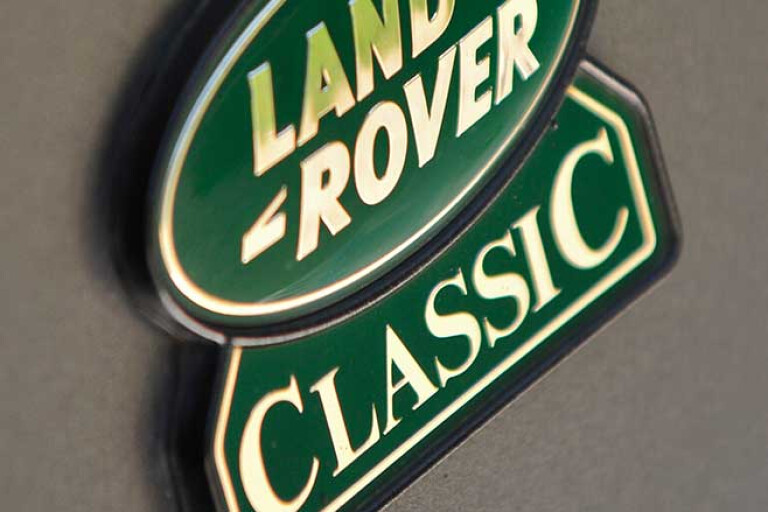
A high-set driving position combined with huge windows provides great visibility in all directions, and the strange instrument binnacle on top of the dash puts necessary information right in a driver’s eye line.
The rear seat on two-door models folded into an untidy heap, but later models used an improved seat stowage system that left more space for cargo.
Performance with the 3.5-litre engines feels more spirited from behind the wheel than against the stop-watch. Early manual versions took a leisurely 18 seconds to reach 100km/h while the 112kW Vogue with a four-speed automatic transmission was timed at a reasonably slick 12.2 seconds. Top speed of the 1970s models was 155km/h, however the later and heavier Vogue could manage just 145km/h.
Fuel consumption in the 14 to 18L/100km range is common to all versions. Early manuals can manage 12L/100km at constant highway speeds and the 3.9 auto is typically around 16L/100km, but that can quickly go past 25L/100km in rough going with low-range engaged.
The fuel tank was originally a reasonable 86 litres but was reduced to a barely adequate 76L in four-door models.
Some owners seeking extra performance replaced the original V8 with a 4.4-litre version as sold in the Leyland P76 and Terrier truck. These can be easily modified to produce more than 200kW, but serious off-road enthusiasts caution against using Holley-type carburettors which don’t perform well in steep terrain.
BUYING
LOW VALUES and high maintenance costs have resulted in stocks of early two-door Range Rovers becoming seriously depleted. By the late-1980s, very good 10- to 15-year-old versions had dropped below $2500 and a reconditioned engine or transmission would cost more than a complete vehicle.
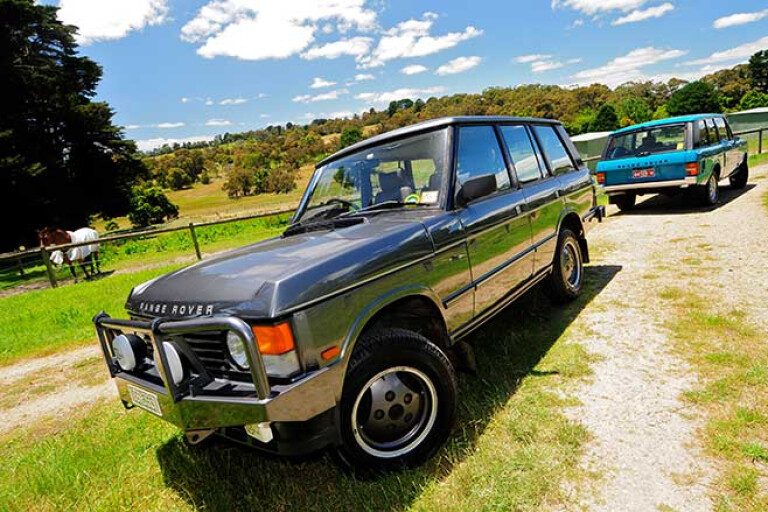
The significant decline in retained values extends to Vogue and early LSE models as well. These generally sell for less than $10,000 and only the best pre-1995 cars will climb past $15,000.
Short-wheelbase models without the more complex suspension are preferable for serious off-road use and have often been modified for improved performance in extreme conditions.
Having set your mind to finding the best early Range Rover available, collective owner wisdom suggests acquiring a tired or mildly damaged one to provide spare parts, you might need them.
BUYER'S CHECKLIST
Suspension & Brakes
Rear-end droop with some weight on board is a signal that the expensive Boge load-levelling strut has had its day. These are no longer available new and can only be reconditioned by specialists. Springs droop due to age and hard use so look for inconsistent gaps between tyre and wheel arches on all corners. Brakes should maintain decent pedal resistance when held down for 20 to 30 seconds, but replacement parts are available. Check that ABS on later models is still working.
Body & Chassis
Mainly, aluminium panels won’t rust but they dent and bend and suffer poor alignment after crash repairs. The chassis and steel body frame need to be inspected on a hoist for rust and off-road damage. Look at areas beneath sills, radius arm and rear A-frame attachment points and the lower firewall. From inside, check the front door posts for bubbling or repair patches, also the footwells, steel bonnet and tailgate and inner wheel arches. Drooping front doors are a sign of rust around the hinge mounts. Test all handles including the tailgate, to ensure they operate easily.
Engine & Transmission
Aluminium engines demand more careful maintenance than those with all-iron components, and any sign of overheating or exhaust smoke is a danger signal. Check the dipstick for creamy, emulsified oil, which signifies internal water leaks from corroded or cracked cylinder heads. Hesitation from early engines can be due to torn carburettor diaphragms. Check the exhaust manifolds for cracking or repairs. Driveline lash is common, but serious clunks when the throttle is closed suddenly or whining that is clearly audible inside the cabin signifies some costly wear. Make sure that the low-range selector engages easily and that the handbrake, which is mounted behind the gearbox, will hold on an incline.
Interior & Electrics
Range Rovers came with vinyl, cloth and leather seat trims and some with timber veneer decoration. Choosing the best interior available will save plenty in refurbishing costs. Replacement trim is available second-hand but may need to be bought as a set so everything matches. The more electrical items fitted to a Rangie, the more opportunity for failures. Keeping a spare alternator stowed somewhere in the car is worthwhile. Air-conditioning, where fitted and working, is a bonus, as the big windows let in lots of heat. Window winders and seat adjusters are easily broken.

OWNER EXPERIENCE
BEVAN FENNER is a founding member of the Victorian Land Rover club and provided bountiful knowledge when brother John and nephew Matthew (who rallies a Range Rover) set about returning their 1977 model to absolute stock condition.
“Getting a good spare vehicle was crucial,” Bevan said. “There wasn’t too much rust but the roof had holes in it so the entire top off the spare one was used. We even removed the air-conditioning as it wasn’t stock.”
Graeme Schache has owned Range Rovers since 1977 and acquired his 1989-build Vogue when it was just six years old.
“I could have had a Jaguar for the same money, but I play drums and there’s plenty of room in the back and it is a really nice, smooth vehicle to drive,” he said.
Several years ago after a botched air-con repair caused the original engine to overheat; Graeme had a new 4.2-litre short motor fitted in place of the 3.9. He has also modified the rear seat to accommodate an on-board refrigerator.

COMMENTS